| Selo | Rowman & Littlefield Publishing Group Inc |
|---|---|
| Edição | 0 |
| Idioma | Inglês |
| Autores | Donna R. Braden |
| Acabamento | Capa Comum |
| Quantidade de Páginas | 210 |
| Origem | Literatura Estrangeira |
 Dinheiro não é o problema, você é (Portuguese)
Dinheiro não é o problema, você é (Portuguese)
Access Consciousness Publishing Company
R$ 105,41 ou até 2x sem juros Finanças para Compras: Domine técnicas e ferramentas para melhores resultados em Suprimentos
Finanças para Compras: Domine técnicas e ferramentas para melhores resultados em Suprimentos
Um Livro
R$ 62,90 à vista Manual do CEO Um verdadeiro MBA para o gestor do século XXI
Manual do CEO Um verdadeiro MBA para o gestor do século XXI
Saraiva
R$ 76,00 à vista Economistas Políticos
Economistas Políticos
Musa
R$ 89,00 à vista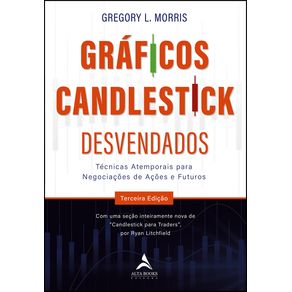 Gráficos candlestick desvendados
Gráficos candlestick desvendados
Alta Books
R$ 114,90 ou até 2x sem juros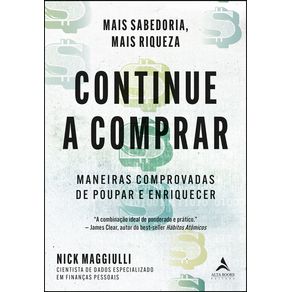 Continue a comprar
Continue a comprar
Alta Books
R$ 72,90 à vista Harvard Business Review manual de empresas familiares
Harvard Business Review manual de empresas familiares
Alta Books
R$ 64,90 à vista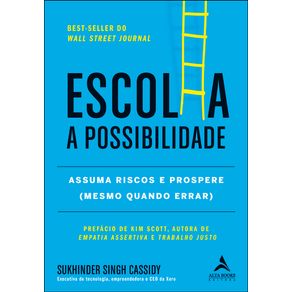 Escolha a possibilidade
Escolha a possibilidade
Alta Books
R$ 70,90 à vista Uma nova forma de pensar
Uma nova forma de pensar
Alta Books
R$ 60,90 à vista Médicos e o imposto de renda
Médicos e o imposto de renda
Canal 6 Editora
R$ 74,90 à vista Richard Branson - Perdendo minha virgindade
Richard Branson - Perdendo minha virgindade
Belas-Letras
R$ 129,90 ou até 2x sem juros Método Ponderisk
Método Ponderisk
Clube de Autores
R$ 47,90 à vista Guia Prático Do Pior Vendedor Do Mundo
Guia Prático Do Pior Vendedor Do Mundo
Clube de Autores
R$ 43,06 à vista Pedagogia Empresarial
Pedagogia Empresarial
Clube de Autores
R$ 72,35 à vista O Filósofo & O Executivo
O Filósofo & O Executivo
Clube de Autores
R$ 61,90 à vista Empreendedorismo 360°
Empreendedorismo 360°
Alta Books
R$ 104,90 ou até 2x sem juros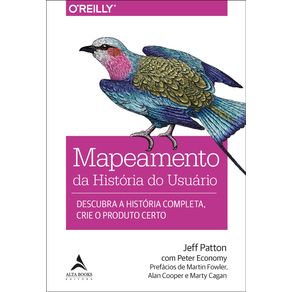 Mapeamento da história do usuário
Mapeamento da história do usuário
Alta Books
R$ 77,90 à vista O guia do investidor azarado para o trade de opções
O guia do investidor azarado para o trade de opções
Alta Books
R$ 60,90 à vista Escolha a possibilidade
Escolha a possibilidade
Alta Books
R$ 70,90 à vista Médicos e o imposto de renda
Médicos e o imposto de renda
Canal 6 Editora
R$ 74,90 à vista Negociações no Mercado Internacional
Negociações no Mercado Internacional
Freitas Bastos
R$ 92,00 à vista Desperte a mulher rica que existe em você
Desperte a mulher rica que existe em você
GENTE
R$ 64,90 à vista 101 perguntas sobre Ethereum
101 perguntas sobre Ethereum
NCOM21
R$ 49,90 à vista Método Ponderisk
Método Ponderisk
Clube de Autores
R$ 47,90 à vista Gestão Da Hospitalidade E Humanização Hospitalar
Gestão Da Hospitalidade E Humanização Hospitalar
Clube de Autores
R$ 58,90 à vista E-social
E-social
Clube de Autores
R$ 55,22 à vista Você, Líder Do Seu Sucesso!
Você, Líder Do Seu Sucesso!
Clube de Autores
R$ 66,90 à vista Guia Prático Do Líder
Guia Prático Do Líder
Clube de Autores
R$ 60,90 à vista 8 Segredos Do Sucesso Em Vendas
8 Segredos Do Sucesso Em Vendas
Clube de Autores
R$ 48,71 à vista A Arte Da Guerra No Jiu-jítsu
A Arte Da Guerra No Jiu-jítsu
Clube de Autores
R$ 45,90 à vista O milionário de amanhã começa hoje: Como fazer Fortuna com 300 reais
O milionário de amanhã começa hoje: Como fazer Fortuna com 300 reais
Ases da Literatura
R$ 54,90 à vista Economistas Políticos
Economistas Políticos
Musa
R$ 89,00 à vista Mapeamento da história do usuário
Mapeamento da história do usuário
Alta Books
R$ 77,90 à vista O guia do investidor azarado para o trade de opções
O guia do investidor azarado para o trade de opções
Alta Books
R$ 60,90 à vista Escolha a possibilidade
Escolha a possibilidade
Alta Books
R$ 70,90 à vista Gestão de imagem
Gestão de imagem
Senac São Paulo
R$ 71,00 à vista Como Criar & Administrar Uma Microempresa
Como Criar & Administrar Uma Microempresa
Clube de Autores
R$ 56,62 à vista Fundos Imobiliários Para Iniciantes
Fundos Imobiliários Para Iniciantes
Clube de Autores
R$ 60,90 à vista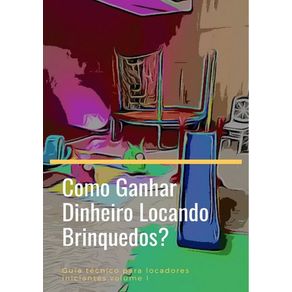 Como Ganhar Dinheiro Locando Brinquedos?
Como Ganhar Dinheiro Locando Brinquedos?
Clube de Autores
R$ 51,90 à vista Pedagogia Da Felicidade Financeira
Pedagogia Da Felicidade Financeira
Clube de Autores
R$ 56,39 à vista Você, Líder Do Seu Sucesso!
Você, Líder Do Seu Sucesso!
Clube de Autores
R$ 66,90 à vista Guia Prático Do Líder
Guia Prático Do Líder
Clube de Autores
R$ 60,90 à vista 8 Segredos Do Sucesso Em Vendas
8 Segredos Do Sucesso Em Vendas
Clube de Autores
R$ 48,71 à vista Concursos Teorias E Questões
Concursos Teorias E Questões
Clube de Autores
R$ 63,90 à vista Candlesticks
Candlesticks
Clube de Autores
R$ 72,54 à vista